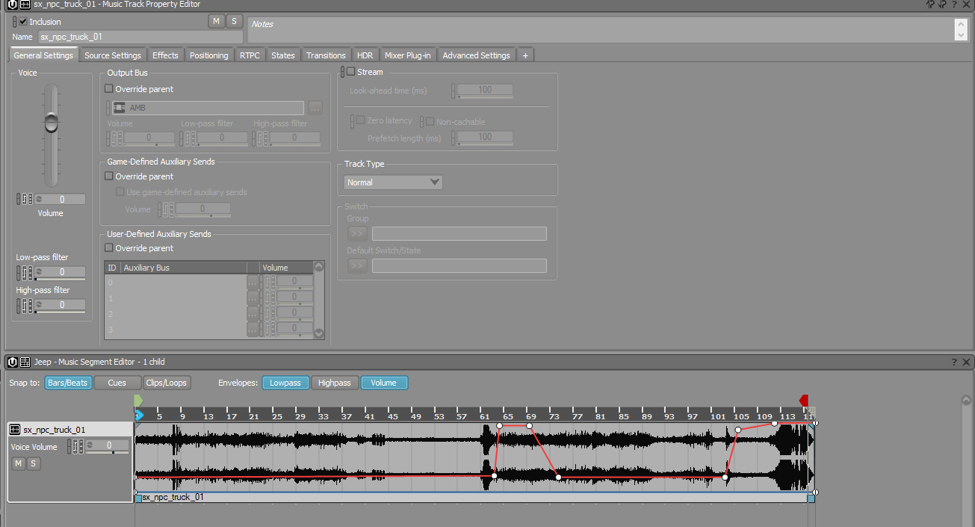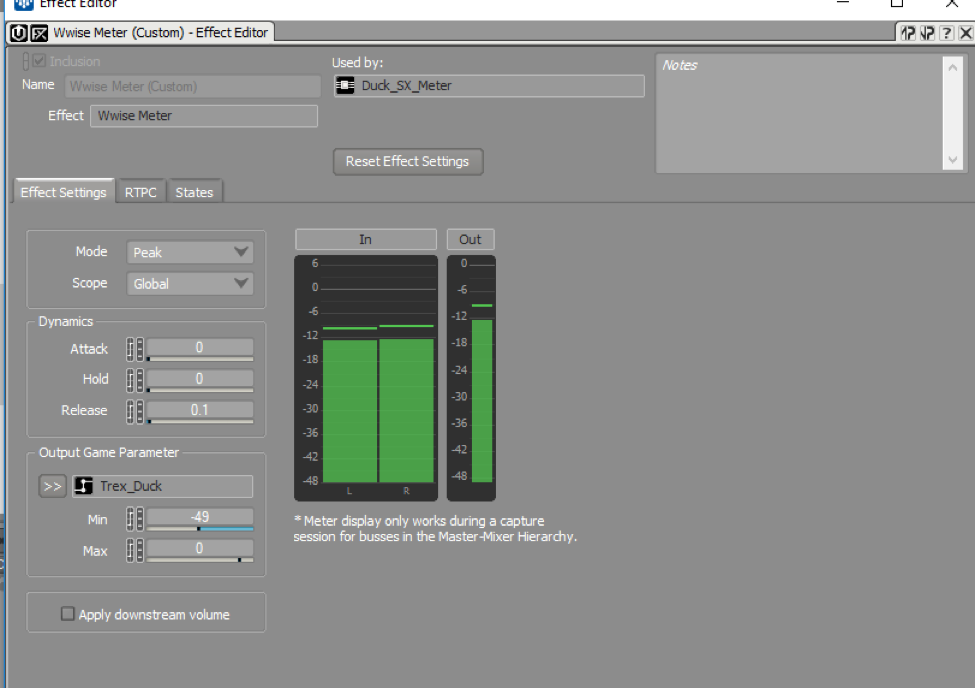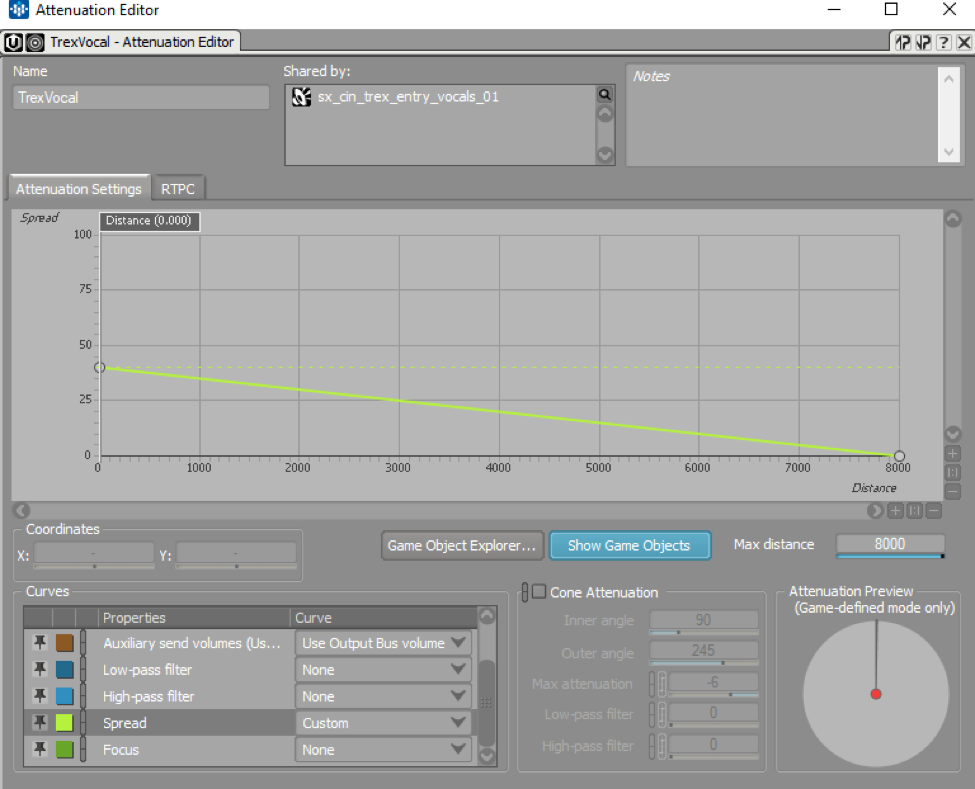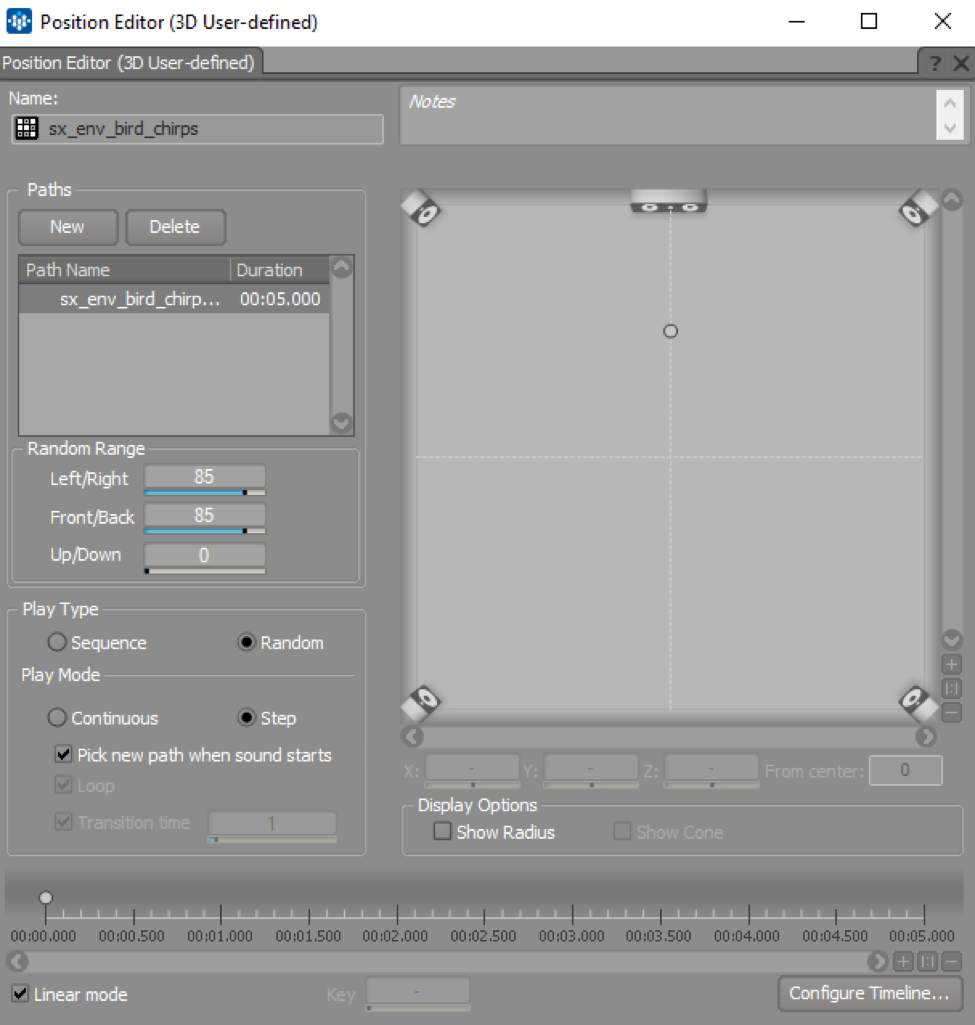Jurassic World: VR Expedition, an interactive cinematic virtual reality (VR) location-based experience, transports players to the visually stunning jungles of Isla Nublar. Players engage in an epic rescue adventure inspired by the Jurassic World film series. More than 100 Dave & Buster's entertainment centers have installed the Jurassic World VR Expedition, making it the biggest location-based VR launch to date!
Our friends at Hexany Audio championed the audio work for this distinguished project. Richard Ludlow, Audio Director & Hexany Audio Owner; Nick Tomassetti, Technical Sound Designer; Justin Hollies, Sound Designer; and Kellen Fenton, Sound Designer, share their experience.

Jurassic World: VR Expedition stays true to the storylines of the franchise and incorporates key dinosaurs known to the audience from the blockbuster. How did this, and the fact that millions of people are already familiar with Jurassic World through watching the films or playing the video games, influence your creative goals, and how did you draw inspiration from this distinct auditory world for this experience?
RICHARD:
Obviously, it was a weighty task getting to work with such an iconic franchise! And working with The Virtual Reality Company (VRC) that developed the Jurassic World VR Expedition (Expedition) to discover the sonic identity of Expedition was a great experience.
We wanted to stay true to a sonic brand that has been around for so long and make sure we were emulating the sound of the originals. We worked with Jim Lima, VRC’s Creative Director and the Director of Expedition. With Jim’s direction, we stayed true to that original sonic identity while still managing a fresh take on the franchise.
Sometimes we will work with older franchises and reimagine them for the game-world, but I think Expedition was different in that we weren’t trying to do something sonically so to speak – Jim’s vision was to take a world that viewers were very familiar with in the cinematic format and, through VR, fully immerse them into this new special world. If it didn’t feel 100% familiar to the participant, we failed.
Jurassic World: VR Expedition combines high-end VR graphics, haptics, sound, and tracking. At what point during development did audio come in, and how did you collaborate with the other teams and stakeholders?
RICHARD:
Sometimes in a project we are brought in very early, and this can be great to help develop systems for playback, etc. In Expedition we were brought in toward the end though, which actually worked out great. Jim had a very strong idea of what the experience would be, and Animation Supervisor, David Schaub, created the initial audio tracks for the dinosaurs as a guide for the design work. All of the little performance nuances - the breathing, grunts, and vocalizations had to be locked down before animation work began - and embellished further by Schaub as animation was refined at VRC. Since animations and gameplay timings were more finalized up front, we were able to come in and quickly bring a lot of things online in a fleshed out experience. This was really great and isn’t always the case.
Were there any audio considerations made to help reduce motion sickness which may be caused by all the various stimuli, all interacting with each other?
RICHARD:
This is where the VRC team excelled. Chief Technology Officer, Carey Villegas, and Software Architect, Geo Barjoud, spent hundreds of hours developing and testing, optimizing, and iterating in Unreal. The key thing here is that this is a VR experience on a Motion Based Platform, so things like movement speed, motion, allowing for breaks, and air blowing on the face all helped to negate motion sickness. From an audio perspective it really wasn’t an issue in this experience. I’ve played a lot of VR games and even though you’re hurtling through the jungle in Expedition, I never felt any motion sickness – they did a great job with this one in my opinion and thankfully it wasn’t really something we had to be worried about on the audio side.
Once in VR, the players find themselves on a quest to rescue as many dinosaurs as they can within five minutes, all the while their vehicle speeds through the wild scenery and is always close to being stomped on or getting stuck. What kind of audio decisions did you make considering the length of this experience?
RICHARD:
Five minutes was a great length. Jim’s main story point was the special encounter you have with the alpha Velociraptor, Blue, so making that scene really count was where a lot of time was spent. It also meant making sure we emphasized the sounds of the “hero” dinosaurs and the T-Rexes.
With the expectation that the dinosaurs were the stars of the experience, this meant that environmental sound effects and music played a secondary role.
Also, because the experience is fairly time-locked, linear, and short, we ended up running some of the SFX (like the truck sounds) through the music system so we could better utilize the volume automation features found in the music system.
How does the audio participate in guiding the player through this experience and directing their attention?
KELLEN:
Things like distant dinosaur footsteps and vocalizations, foliage movement, and ambience shifts were placed into the experience very carefully as a way to transition from one ‘scene’ or section of the experience to the next.
How did you prioritize your audio for this experience? Can you tell us a little bit about any systems you may have designed for it? And how you leveraged Wwise?
NICK:
Dinosaurs were the focal point of the experience, so their vocalizations and sound effects had to stand out the most. In an environment as loud as Dave & Busters we had to account for the noise of the “venue” as well as what was happening in game. Using the Wwise meter and auto ducking features, we were able to help the dinosaurs pop out of the mix more at key moments by turning down ambiences and less important SFX.

RICHARD:
Jim wanted the stampede scene to be epic - a big action sequence where you are surrounded by rampaging dinosaurs. The sound designer, Walter Murch, popularized the Rule of Three – the phenomenon that when you have three or more similar sounds triggering on screen (e.g. dinosaur footsteps), the viewer no longer relates those sounds to specific actions.
We discovered, however, that this isn’t quite the case in VR. When the viewer can turn their head and look at any dinosaur around them to their left, right, or in front of them, it becomes much more obvious with such a narrow ‘first person’ focus if something is missing sounds. The rule, of course, is still valid. It’s just that VR has many different perspectives or fields of view that you have to account for.
Therefore, we had to make sure that all of the dinosaurs immediately near the player (and also the dinosaurs that were massive like the T-Rex) did indeed have animation-locked footsteps. We coupled this with a ‘left side’ footstep audio track that was stereo and ‘right side’ footstep track that was also stereo. We gave both of these a fair bit of spread and combined with the animation-locked footsteps it gave the stampede an extremely full sound that still remained spatialized.
We also, of course, used spread on many other elements, like T-Rex vocals so that as the T-Rex got closer it sounded more stereo and cinematic.

Can you elaborate on how you leveraged object based vs. ambisonics towards creating a cohesive spatial mix for this experience?
RICHARD:
We actually didn’t use any ambisonics in this experience, but instead used a combination of object-based sounds and more traditional 2D stereo sounds to help make the experience as ‘cinematic’ as possible. Because timings are generally locked for the experience, we were able to design certain elements in 2D and then emphasize them with spatial components. For example, when a Pteranodon dives at you, we actually sometimes make that moment a combination of 2D wing flaps since they are so huge and spatialization is less important, combined with a 3D mono screech to give it a more localized element in the world in the event the player isn’t looking right at it when it dives at them.
In Jurassic World: VR Expedition, you’re trying to direct the attention of four people at once. Does that complicate things? Also, players can see silhouettes of each other in the experience as they compete against each other on the number of dinosaurs they can capture. Does the audio experience differ depending on where you sit on the motion base — left, right, in the middle?
RICHARD:
Thankfully this wasn’t actually an issue (that we had to solve)! Thanks to the VRC team – they used some behind the scenes wizardry on the tech side so that every player actually experiences relatively the same thing – we didn’t have big differences that we needed to account for.
The experience combines motion chairs with HTC Vive VR headsets. What kind of special considerations did you have to make for this experience given that it is an out-of-home VR experience, as opposed to working on a home-based VR experience? And, how did they influence any creative or technical decisions?
KELLEN:
The main challenge we faced from the onset was how it was going to be mixed. If this were a home-based experience you could design a mix that is more dense and dynamic, whereas the nature of an ‘out-of-home’ VR experience is that the player is constantly bombarded by other stimuli. As a sound designer we have to ask ourselves ‘what is the most important sound the player needs to hear right now’ and we design the mix around that.
Was there anything in the physical environment or any kind of sensory experiences (smell, wind, etc.) driven from the audio engine and, if not, was there anything you believe would have potentially made sense to drive from the audio engine?
RICHARD:
Sometimes we find ourselves responsible for haptics on location-based experiences, as those can be driven from the audio side / Wwise. However, for this project all non-audio sensory things like wind from the fans were designed and created by VRC. Hexany just supported this excellent work through the use of sound.
In more than one location-based experience, we’ve found that we actually needed to cut the sounds of wind down significantly on the sound side of things as the fans were taking care of that, and also drowning out some sounds. We tested the motion-based platform throughout development, so that was immensely helpful for us.
Was there any audio playing outside of the headphones, from other speakers in this LBE environment?
RICHARD:
There was a lot of environmental noise from Dave & Busters to be sure, and also a pre-show video playing at the same time for the next group of players while one group was riding the experience. So, while there was a fair bit of external noise to contend with, none of those speakers were relevant for those playing the experience. In the past we’ve done games with headphones combined with subwoofers for additional enhancement of LFE content, but didn’t do that for this one given the environment it was in.
Where there any expectations you may have had about a creative or technical direction you were wanting to take that did not end up working out just as you had imagined it, and why? Were there any particular creative or technical challenges you hit?
JUSTIN:
We began the project with the notion of making the world around the players very vibrant and alive with a lot of detail in the backgrounds and ambiences. Our first couple of passes featured far more layers of birds, insects, distant dinosaurs, wind, trees, water, etc. However, as the experience evolved and became more fleshed out, we started stripping away these elements from certain scenes, mainly those with a lot of action and cinematic moments. The result was a cleaner mix that kept the players’ focus on the most important elements of each scene and a more cohesive soundtrack.
What Wwise features if any were especially helpful in allowing you to realise your creative vision?
NICK:
Because the ride is on a spline path that never changes, we were able to create collision zones which trigger different designed-in-Wwise ambiences. With user defined positioning we don’t have to rely on the game having a physical object moving in the world; we can define the paths ourselves creating the effect that things are around us and moving.
RICHARD:
Also, things like spread, the Wwise Meter, and ducking features were immensely helpful, as described earlier. Plus, being able to set memory vs. streaming settings in a project is always a big plus when optimizing performance.
What are you most proud of when it comes to this project?
KELLEN:
I think we made something that fits the world of the Jurassic franchise sonically while also adding a level of immersion and believability that greatly heightens the player’s experience.
What was the most fun part of working on this project?
KELLEN:
We were given many of the original SFX stems from the 1993 Jurassic Park film to use on this project. VRC used these sounds to map out the vocalizations and conversations of the dinosaurs, so that they could animate the performances of the dinosaurs. We then further manipulated and layered the assets with new content to suit the animations; we also layered additional sounds and content of our own for the ambient jungle and the dinosaurs inside the stampede.
 |
 |
||
|
|
|
Richard Ludlow Audio Director, Owner |
Kellen Fenton Sound Designer |
 |
|||
|
Nick Tomassetti Technical Sound Designer |
Justin Hollis Sound Designer |


Comments